
|
| The bright colors of the Cygnus Loop Nebula show clear emission from a hot gas, and expanding shells of materials emitted from a supernova explosion which occurred some 15,000 years ago. [NASA/HST] |
Studying stellar colors is more than learning about the emission of light which falls in the optical portion of the electromagnetic spectrum. It means beautiful pictures! The images shown below were all taken with the Hubble Space Telescope, showing some of the incredible emission features found in nearby galactic objects.
Throughout most of its lifetime, a star generates the energy to shine by burning hydrogen and converting it into helium in its core. Once it has exhausted the available nuclear fuel, it begins to die. The length of its life depends upon its mass: the heavier the star, the faster it will burn through its hydrogen, and the sooner it will die. The most massive stars die very violently, in huge explosions called supernovae. These bright blasts tear the stars apart, and their remains are blown out into space. We can explore the elemental abundances of these remnants by looking at their colors.

|
| The bright colors of the Cygnus Loop Nebula show clear emission from a hot gas, and expanding shells of materials emitted from a supernova explosion which occurred some 15,000 years ago. [NASA/HST] |
Most stars, those like our Sun or up to eight times heavier, lead less exciting lives (and die less exciting deaths). After the nuclear fuel supply is exhausted, the outer layers of the star begin to collapse inwards. As they are compressed they ignite, in turn causing the outermost shells of gas to explode outwards in all directions. As the dregs of the hydrogen resources dwindle away, more and more material is ejected in shells, leaving only a small remnant of the hot stellar core. As this heats up, it radiates more and more strongly, and the surrounding planetary nebula of gas will begin to glow brightly.
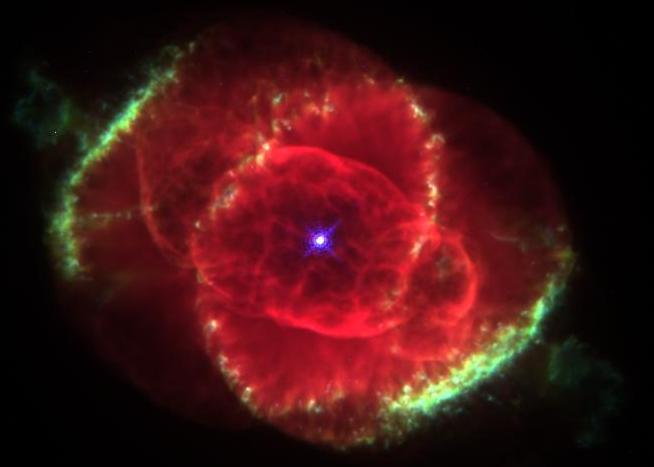
|
| The Cat's Eye Nebula shines with red (hydrogen) and green (oxygen) features tracing concentric gas shells, jets of high-speed gas, and shock-induced knots of gas. [NASA/HST] |
The remainder of the stellar core is called a white dwarf. With a mass just a bit less than the Sun stuffed into a volume comparable to that of planet Earth, it is far more dense than its progenitor star. The white dwarf has no means to generate new energy, so over time it radiates away its remaining heat. It slowly cools and fades, and over several billions of years decays into a dark lump of coal. The surrounding nebula of gas will continue to expand into the surrounding space, at a rate of almost 100,000 kilometers per hour. As the white dwarf cools and the nebular gas shifts further and further away from it, it becomes harder and harder for the white dwarf to heat the gas. In a mere 25,000 years, the nebula will fade away. But until then, appreciate the complexity and beauty of these stellar graveyards, as revealed by the Hubble Space Telescope!
 |
 |
 |
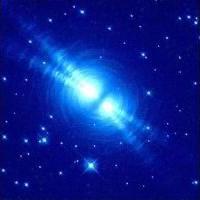 |
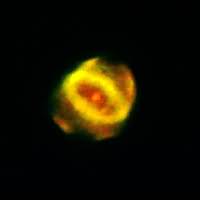 |
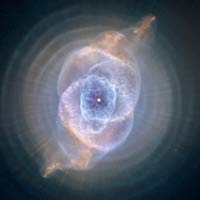 |
 |
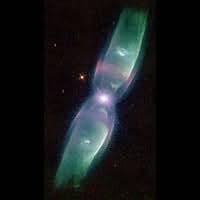 |
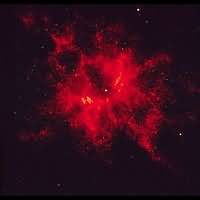 |
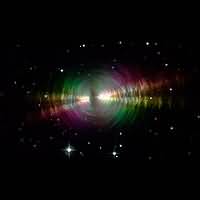 |
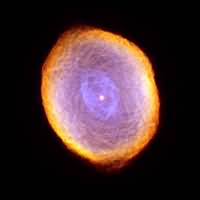 |
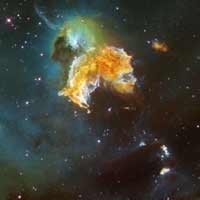 |
| Nebulae come in all sorts of shapes, sizes, and colors. [NASA/HST] | ||
The nebula will eventually disperse into the surrounding interstellar medium, enriching it with key elements such as carbon, nitrogen and oxygen that are produced only deep in stellar interiors. This material will be recycled to form a later generation of stars, and even planets. The atoms of many of the elements that comprise our own bodies were created in the depth of the stars above. You and I are all made of star stuff!